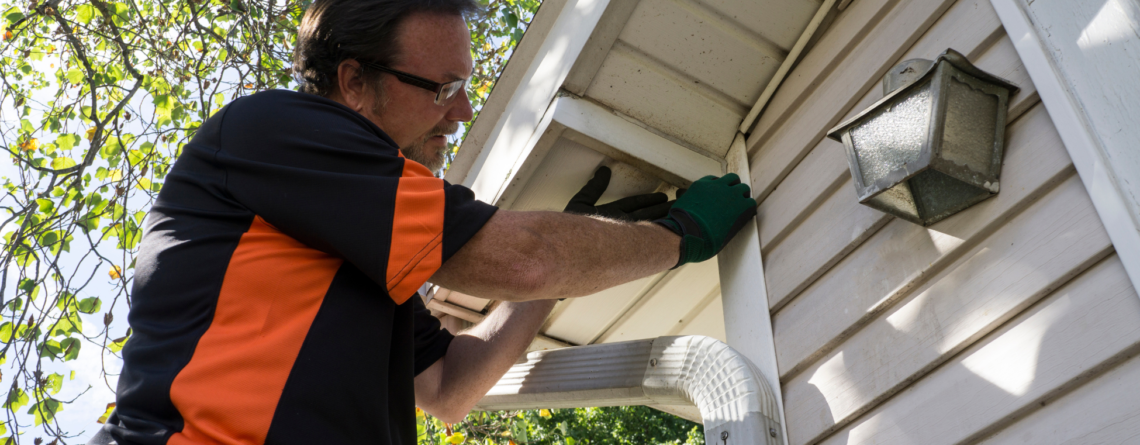Energy Improvements Outside – How to Save Money and Be More Comfortable
Last week I shared ideas about how to improve your home’s energy efficiency by making changes to your home’s interior (replacing old appliances, adding a whole-house fan, etc.). This week, I’ll share some thoughts on exterior improvements to reduce your costs and increase your comfort.
As with many things, improvements come in all shapes and sizes. Exterior improvements can include planting a shade tree on the west side of your home, installing climate-friendly landscaping with drip irrigation, putting solar panels on your roof, and more.
In Ukiah, our blazing summer sun can really pummel our homes. A big, deciduous (loses its leaves in winter) tree can provide shade that reduces the temperature of a home, allowing your air conditioner to do a little less work. Then, in winter when the leaves are gone, the weaker sun can provide some help in warming your home.
Another way to add shade is with eaves or awnings. What’s the difference? Eaves follow the roofline and go over everything; awnings go over windows (in case you were wondering). According to www.energy.gov, window awnings can reduce solar heat gain in the summer by up to 65% on south-facing windows and 77% on west-facing windows. You can use an awning to shade one window or have an awning custom-made to shade the entire side of your house.
In the past, awnings were typically made of metal or canvas, which need to be re-covered about every five years. Today, awnings are made from synthetic fabrics like acrylic and polyvinyl laminates that are water-repellent and treated to resist mildew and fading. Whatever the fabric, you should choose one that is opaque and tightly woven. A light-colored awning will reflect more sunlight.
Awnings require ventilation to keep hot air from becoming trapped around the window. Grommets (eyelets) or other openings along the tops and sides of an awning can provide ventilation. You can roll up adjustable or retractable awnings in the winter to let the sun warm the house.
Once your house has maximum shade, consider saving water by opting for landscaping designed to handle drought conditions. For gardens or other plants that require watering, use drip irrigation that goes right to the area in need. For details on how and when to water, ask your local nursery or landscaper. I understand that watering early in the morning allows the maximum water to reach your plants (before the sun evaporates it), while watering during the day can scorch some plants, and watering in the evening can cause mildew. I am way out of my league here, so ask a landscaper.
We’ve talked about reducing the sun’s impact during summer, but the sun can be a great source of energy, too. Solar panels can gather the sun’s rays to power all kinds of things, lowering your utility bill in the process. I found an interesting site online that provided a solar savings calculator: www.solar-estimate.org. According to some estimates, homeowners can expect a return on their solar power investment of 15 percent or more per year. Research has also shown that homes with solar panels on the roof sell more quickly.
If you’ve done what you can to improve energy efficiency with new appliances and landscaping, and you want to go to a whole new level, you could consider what I’d call extreme retrofits, like adding a windmill or hydro-generator to your property. If you have the right location and/or natural resources, you could win big if you go big. And, if you’re “off the grid” (generating all of your own energy), it’s even more important to be energy efficient, because pure energy generation is expensive – either in fuel or in capital investment.
Extreme retrofits aren’t for everyone. If you live in downtown Ukiah, a tall windmill (also called a wind turbine) may violate several codes. And, for hydro-generation, you need “hydro” – water pressure that will make your investment pay off.
For other great energy-saving ideas, go to www.houselogic.com or www.energy.gov.
Next time I’ll write about homeowner’s insurance. If there’s something you’d like me to write about or if you have questions about real estate or property management, feel free to contact me at rselzer@selzerrealty.com or visit our website at www.realtyworldselzer.com. If you’d like to read previous articles, visit my blog at www.richardselzer.com. Dick Selzer is a real estate broker who’s been in the business for more than 35 years.






